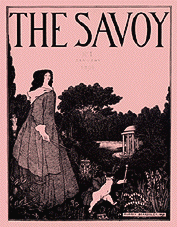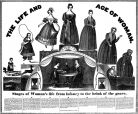In 1835, The Life and Age of Woman was created and published by A. Alden Barre. The picture depicts the seven phases of a woman’s life during the Victorian era. The caption states: “The virtuous woman is a crown to her husband.” In this image specifically, it shows the life of a woman and what their entire life was supposed to model. From early as age 1, women during the Victorian were made to model the elder women in their lives as well as observe and aspire to be just like them. The little girl is then expected to grow up into a young lady and tend to domestic attributes as well as to serve as a child- bearer and maternal figure. Once the woman reaches age 30, she’s expected to cleanse herself of all sexual and physical pleasures by instead, performing domestic activities such as tending to the house and becoming a great mother. This publication mirrors the life expectancy described in The Tenant of Wildfell Hall, specifically Helen. Helen is trapped within her marriage and can’t leave due to the laws restricting women. She isn’t allowed to run away or perform tasks that she would like to due to all of the legal restrictions. Not only is Helen affected by the social and legal restrictions of women during the Victorian era, but so are all the other female characters.
Brontë, Anne, and Margaret Lane. The Tenant of Wildfell Hall ; Agnes Grey. Dent, 1980.




